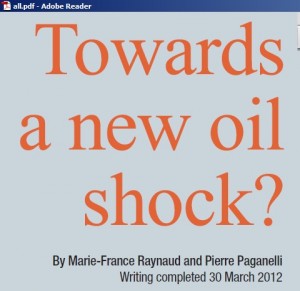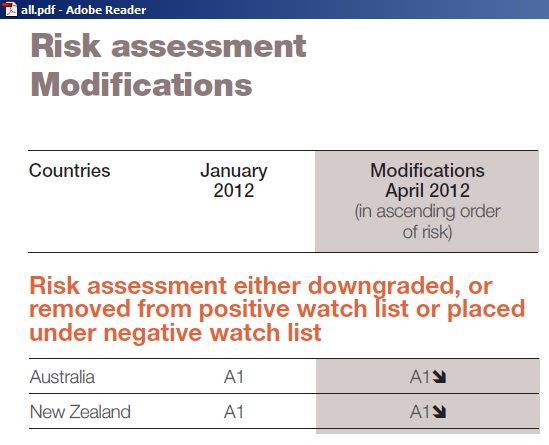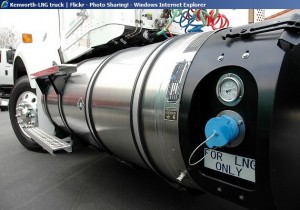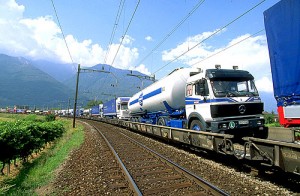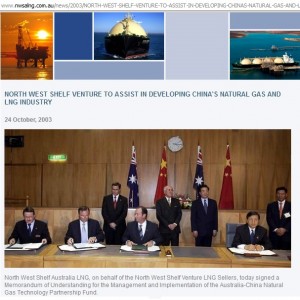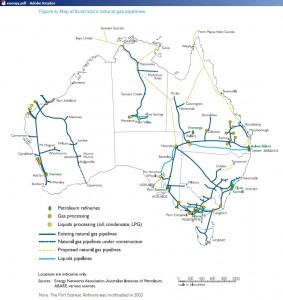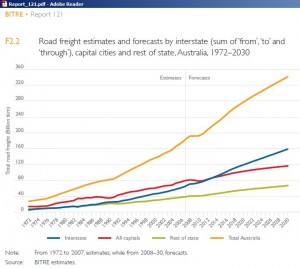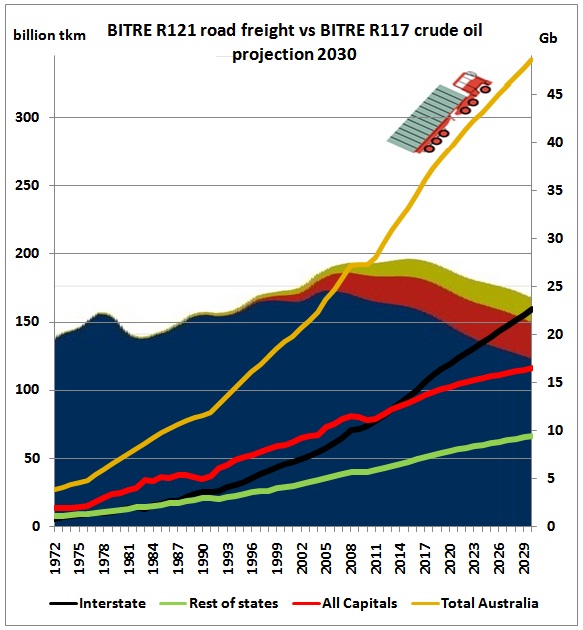The trucking company 1st Fleet has gone into voluntary administration. Only months of checking the books by the administrator de Vries Tayeh will reveal why that happened but following factors may be at play:
(1) high diesel prices which are continuing much longer than in 2008
(2) a weak retail sector (money motorists spent at the bowser can’t be spend in the shops)
(3) declining margins in the retail sector which passes on pressures on the logistics industry
(4) financing problems
So all the factors have something to do with peak oil which increased oil prices five-fold from their 1990s level and triggered the GFC.
 http://www.abc.net.au/news/2012-05-03/trucking-workers-lose-jobs/3987724
http://www.abc.net.au/news/2012-05-03/trucking-workers-lose-jobs/3987724
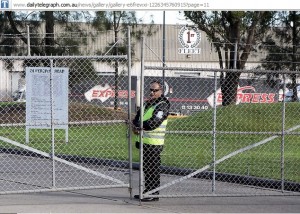 http://www.dailytelegraph.com.au/business/st-fleet-shut-down-600-jobs-to-go/story-fn7ki14e-1226345517546
http://www.dailytelegraph.com.au/business/st-fleet-shut-down-600-jobs-to-go/story-fn7ki14e-1226345517546
 1 St Fleet web site with notice on voluntary administration, captured 4/5/2012
1 St Fleet web site with notice on voluntary administration, captured 4/5/2012
Trigger for the 1st Fleet debacle is the withdrawal of the financing facility by the French company Coface Australia. More details are in this article:
Transport company head breaks down as he lays blame for collapse on administrators and funders
4/5/2012
A distraught Brown [managing director of 1st Fleet] says he used a French company called Coface Australia to help make its payments, rather than a bank overdraft. In return for payments, Coface took security over the firm’s assets.
http://www.pmflegal.com/blog/index.php/2012/05/04/transport-company-head-breaks-down-as-he-lays-blame-for-collapse-on-administrators-and-funders/
On the Coface Australia website we find an interesting report titled “Country Risk Overview” and a chapter “Towards a new oil shock?”
“We foresee a $120 price per barrel of Brent in 2012. This reflects the severe constraints limiting the oil supply since the year began, the strong demand from emerging countries,
and the heightened geopolitical uncertainties. In this article we consider several scenarios and analyse the effect on the world economy if prices surged beyond $120 per barrel. The global recession is likely to be triggered if prices soared above $200 a barrel but what would be the consequences if Brent prices surged to an intermediate $150 a barrel? And then, how would American, Japanese, European and emerging companies be affected?”
Australia: Negative watch on the A1 risk assessment
• The very strong growth expected in 2012 (about 2.8%) rests largely on mining sector performance. But this also tends to cloak the difficulties in manufacturing and tourism, more sensitive to price competition. Those two sectors have suffered not only from the appreciation
of the Australian dollar but also from weaker domestic demand.
• Housing construction has sagged in a context of chronic shortage, which will likely put upward pressure on prices.
• The confidence of households – deep in debt – buckled late 2011 amid growing unemployment.
• Access to credit has remained difficult for companies outside the mining sector and payment times have tended to lengthen (accordingto a survey conducted by Coface Australia over half of the 553 companies participating reported that payment times granted to customers had increased by over 60 days).
• Corporate bankruptcies accelerated (up 17.3% in six months through February 2012), a trend consistent with the rise of the Coface payment incident index.
http://www.coface.com.au/PDF_interactif/country_risks_overviews_apr2012/files/docs/all.pdf
So that gives us some background information on the Coface decision.
Now to the title of this story. Some of the above problems surrounding peak oil could have been mitigated had prompt action been taken after Colin Campbell’s warning between 1996-1999 details of which are here:
http://www.oilcrisis.com/campbell/
Who was in power then?
8/7/2011 “Yes, Prime Minister”, peak oil 2006 under your watch
http://crudeoilpeak.info/yes-prime-minister-peak-oil-2006-under-your-watch
What should have been done for the trucking industry? Australia’s gas could have been used as alternative transport fuel, either as CNG (urban freight distribution) or LNG (long distance trucks).
Not to mention that rail could have been electrified and intermodal freight trains be introduced to carry trucks and/or trailers on flat bed cars.
However:
6 month’s after the Iraq war – a failed attempt to grab Iraq’s pre-peak oil with the objective to push the global crude oil peak a couple of years into the future – we saw the Howard government signing a memorandum of understanding with the Chinese Government to export LNG instead of looking at the national interest first and use the gas domestically.
Howard’s energy white paper of June 2004 said there is no need to accelerate the uptake of alternative transport fuels. Howard proclaimed Australia to be an energy super-power[1] and allowed the export of huge amounts of offshore gas from the North West Shelf instead of setting policies in place which would have allowed Australia to use its gas as transport fuel.
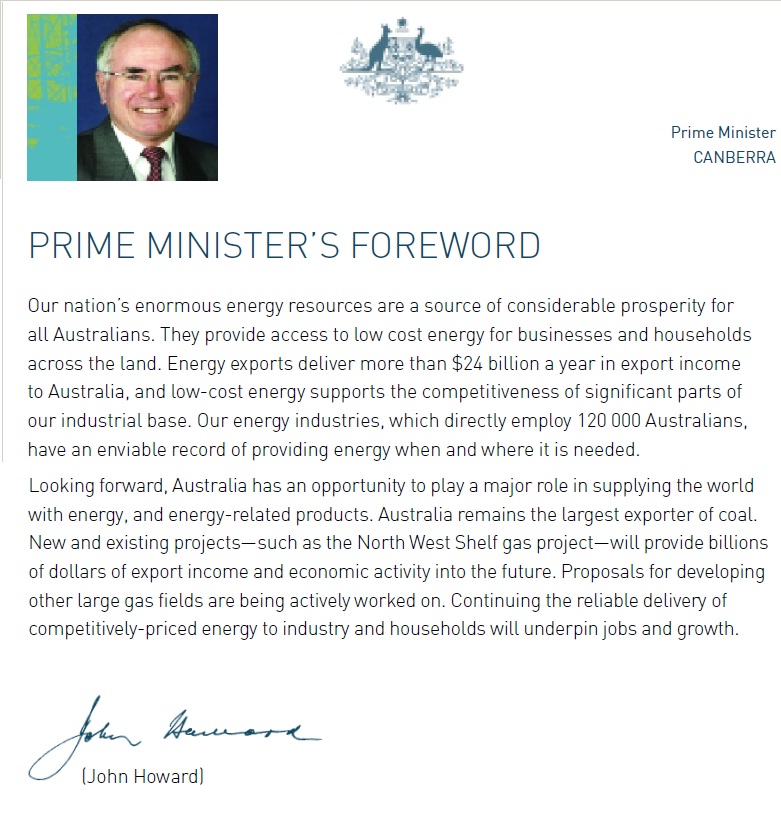 This is what Howard’s Energy White Paper said in 2004:
This is what Howard’s Energy White Paper said in 2004:
Facts wrong:
(1) “Despite increasing demand for oil, there are sufficient reserves to supply world demand for around 40 years”; page 119
Objectives wrong:
(2) “The above factors mean that there is currently no case for the government to accelerate the uptake of these [alternative] fuels on energy security grounds. To do so would involve additional costs for consumers, with few energy security benefits”; p 124
Howard’s EWP is archived in Pandora. My critique of the Energy White Paper which I wrote at the time is available as a submission to the Productivity Commission. The links are here:
8/11/2004 Critique of Energy White Paper June 2004
http://crudeoilpeak.info/critique-of-energy-white-paper-june-2004
Instead of wasting billions on new highways a gas pipeline should have been built to connect the North West Shelf and/or Darwin with the East coast.
Map of gas pipelines as shown in the EWP 2004
Why is all this so important now, 8 years later?
Firstly, because the same mistakes of not using gas as transport fuel are being repeated right now as Queensland’s coal seam gas is exported from Gladstone. Worse still, as the comparatively “clean” offshore gas is being sold off for good we are now spoiling our landscape with fracking projects for CSG. 2,400 wells have to be drilled on farmer’s land for every LNG train in Gladstone.
Secondly, just as 1st Fleet has gone into administration, we see the Federal Transport Minister and the NSW Premier fighting over road funding for the Pacific Highway duplication [2] instead of planning for the much more important and energy efficient rail duplication from Maitland to Brisbane.
In research report 121 dated December 2010, BITRE forecast: “…..total road freight is expected to grow from 191.5 billion tkm in 2008 to 342.0 billion tkm in 2030. However, the total road freight task is expected to plateau temporarily, early in the forecast period (i.e. 2008 to 2010) due to the global economic downturn. It is expected that road freight task will begin to increase after 2010 until the end of forecast period (i.e. 2030), as shown in Figure 2.2 and Table 2.1. In a recent study, BITRE has noted that domestic demand for manufactured goods is underpinning much of road freight’s future growth (BITRE 2009b).”
http://www.bitre.gov.au/publications/2010/report_121.aspx
4 report numbers earlier BITRE calculated in R 117 that global crude oil production in 2030 will have declined by 15% compared to a peak by the mid of this decade.
Let’s put that into a graph:
This graph is for illustrative purposes only. We superimpose road freight estimates (curves, LHS) from BITRE 121 on crude oil projections (stacked areas, RHS) from BITRE 117. The scale of the vertical axis has been adjusted so that road freight and oil production start off at present levels. By 2030, road freight would increase by 73% while global oil production goes down by 15% in the same period. It is obvious that these 2 trends are incompatible. A more detailed, peak oil aware analysis of various BITRE reports on road freight (including truck productivity report 123) will be topic for another article on this website.
In order to be fair to both sides of politics, the Rudd/Gillard government is not better than the Howard government. We had to witness the refusal of the Gillard government to table BITRE 117 before the Senate:
24/2/2012
Australian Government kicks own goals in Senate peak oil debate (peaky leaks part 3)
http://crudeoilpeak.info/australian-government-kicks-own-goals-in-senate-peak-oil-debate-peaky-leaks-part-3
We have yet to see truck rallies in Canberra:
11/10/2011 Australia’s natural gas squandered in LNG exports
http://crudeoilpeak.info/australias-natural-gas-squandered-in-lng-exports
13/10/2011
NSW gas as transport fuel. Where are the plans?
http://crudeoilpeak.info/nsw-gas-as-transport-fuel-where-are-the-plans
30/4/2012
NSW Transport Master Plan debates conventional peak oil 2006, assumes continuing oil age
http://crudeoilpeak.info/nsw-transport-master-plan-debates-conventional-oil-peak-2006-assumes-continuing-oil-age
Conclusion:
Howard missed several warning signs of peak oil in his first years of office. He should have turned around Queen Mary at that time. Given the long lead times of energy and transport projects his wrong decisions are now – 10 years later – popping up in the economy. This process will continue. Despite peak oil being at an advanced stage, the Rudd/Gillard government was and still is not better and the inertia of the bureaucracy will almost ensure that nothing will change until a big bang shakes up the system including the media. As peak oil is never the sole cause when companies go bankrupt, other factors are being blamed and the general public continues to be kept in the dark about what is really going on.
[1] Australia can be energy superpower: PM, 17/6/2006 http://www.smh.com.au/news/National/Australia-can-be-energy-superpower-PM/2006/07/17/1152988454801.html
[2] 3/5/2012 Albanese denies highway funding claims http://www.businessspectator.com.au/bs.nsf/Article/Albanese-denies-highway-funding-claims-TXD4Q?OpenDocument&src=hp7
